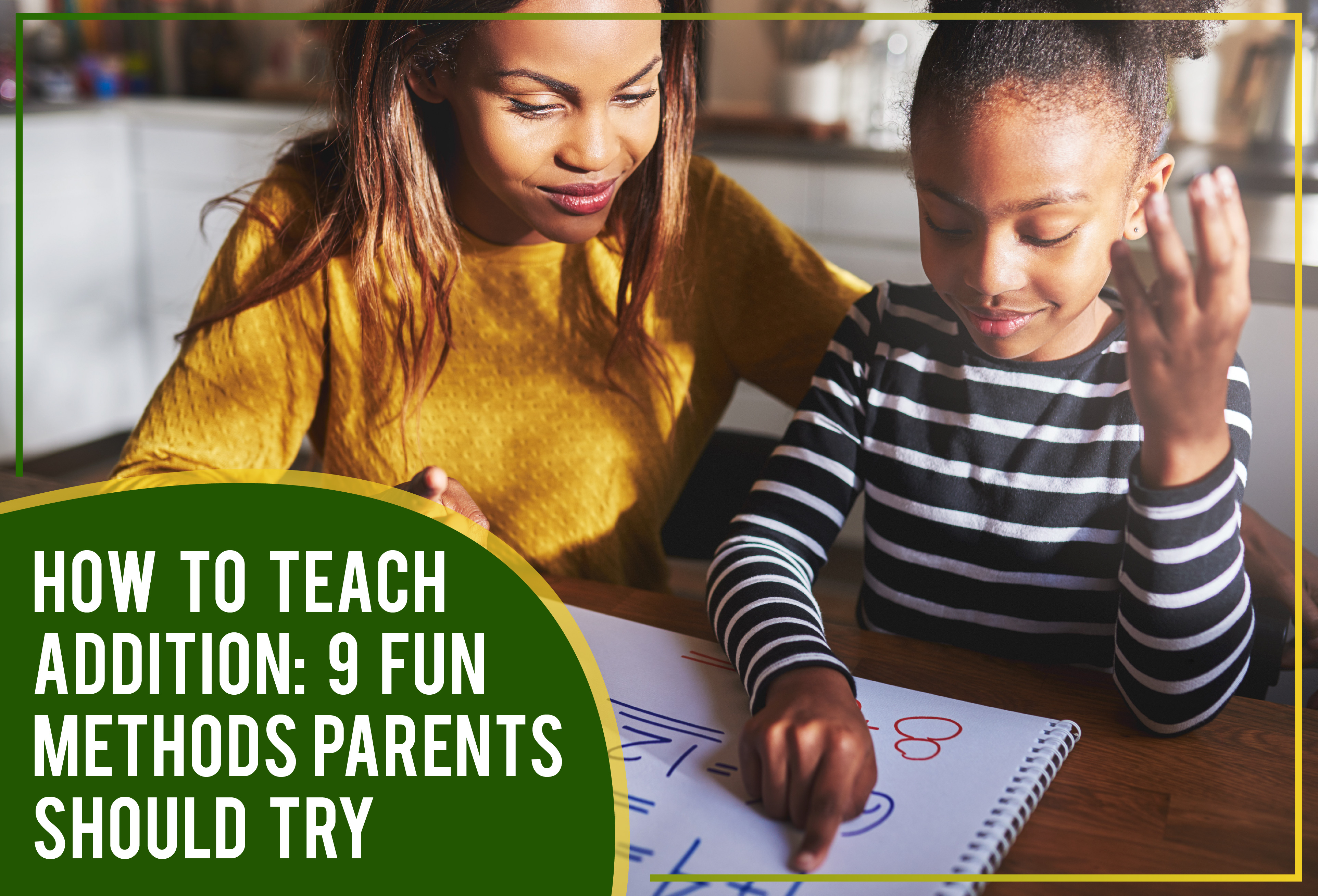How to Teach Addition: 9 Fun Methods Parents Should Try
Addition is a simple yet essential mathematical operation. It is very basic, but can also be tricky for children to master. That's why parents often find themselves having a hard time figuring out the best way to teach addition to their children.
This article will show you a few ways you can make learning math fun by using some helpful strategies.
How to teach addition the fun way
Use manipulatives
Most children tend to be more engaged and responsive when you teach addition using visual tools. Choose objects that are easy for young children to handle and manipulate. You may use items like toy blocks or pieces of cereal. Use a few items to show your child the relationships between numbers:
-
Present children with a small set of items. For example, you can give them a group of three blocks and another group of four blocks.
-
Ask children to count each set. Then have them combine these groups and then count the total.
-
You can now explain that what they just did is add the items to find the total amount.
Sing addition-related songs
Singing songs is another great way to help children learn new concepts. Use music as another fun strategy to teach your child about addition. Below are some songs and YouTube channels that can help your child learn addition quickly:
-
Jack Hartmann Kids Music Channel
-
Have Fun Teaching
-
UMIGO - WildBrain
-
Sesame Street: “Adding Song” with Bert and Ernie
-
“Counting Song” by Pancake Manor
Use game pieces
Playing with dice is another exciting way for kids to learn about addition. Instruct your child to roll the dice and add the two sets of results. You can also incorporate math into playing board games, as players need to use addition to determine their next move.
Playing cards and dominoes also provide fun opportunities to teach addition.
Count coins
Using money is a practical way for kids to learn about addition. Divide coins into different quantities, from the smallest denomination (pennies) up to the highest (quarters). When you use coins to teach children about math, you demonstrate an important real-world application of addition.
Tap into your child's imagination
You can even incorporate concepts of addition into the stories or characters that your child loves. For example, does your little one enjoy stories about dragons? Come up with silly situations, like a dragon eating apples or juggling other objects. Ask your child how many more apples the dragon can eat, and then add up the total amount. Using situations and subjects that are of interest to kids is more likely to trigger their interest in the learning process.
Apply math in your daily routines
Math terms can sometimes seem like a strange new language, especially to young children. That's why it's crucial to remind them how these math concepts apply to various things we see in our daily lives. Create a list of all of the activities your family does at home that relate to addition. Here's a sample list:
-
Time: Record how many minutes or hours your child spends sleeping, watching TV, or exercising.
-
Cooking - See if your child can estimate how many pancakes each family member will eat? Then have your child add up the amounts.
-
Grocery shopping - Ask your child to help you total the prices of all of the items in your cart.
When you relate addition to typical day-to-day errands and activities, it helps children understand that they don’t have to depend solely on formal ways of studying and practicing math operations. Instead, they will find meaning in learning as they become more familiar with all of the ways in which addition applies to the real world.
Use representations
You and your children can use things around your home to represent numbers. Does your family love fruit? Let's say you have a set of green apples and another set of red apples. You can use these to teach your child about addition.
Use your computer and other electronic devices
When you teach addition, try using different apps. There is plenty of fun online games that can make learning about adding more convenient and enjoyable for children. Here's a list of a few useful math apps:
-
Addition Subtraction for Kids+
-
Vegetable Maths Masters
-
Marble Math
-
Sumaze! Primary
-
Dino Tim: Addition and subtraction for kids
Create task cards to count objects or activities
You can always use objects around your household, your children's belongings, or their daily activities for your task cards. Here are a few sample tasks:
-
How many blue toys and red toys are in the room?
-
How many times will your child brush their teeth in one week?
-
How many big items and small items are there in a room?
-
Draw ten frames on a card. Then write an addition problem. For example, write “4 + 5”. Ask children to represent the problem using the manipulatives and the frame.
You can even encourage teamwork by creating group tasks for your children.
At Mrs. Myers' Reading Room, we know how to teach addition and other math concepts using fun and engaging activities. Contact us today for more information!





